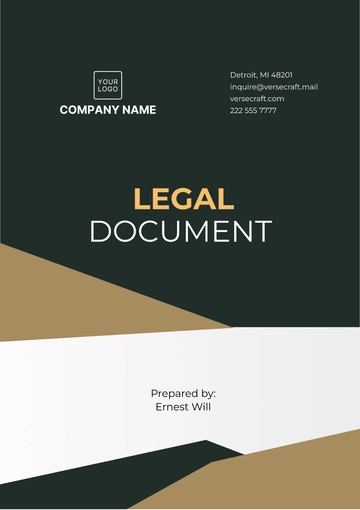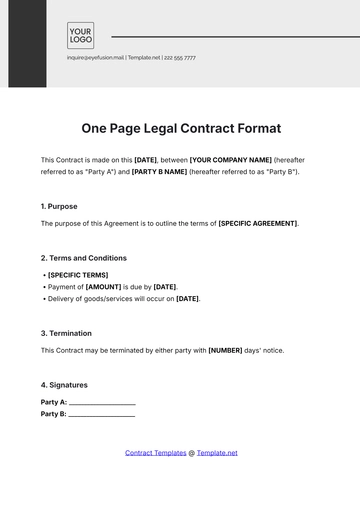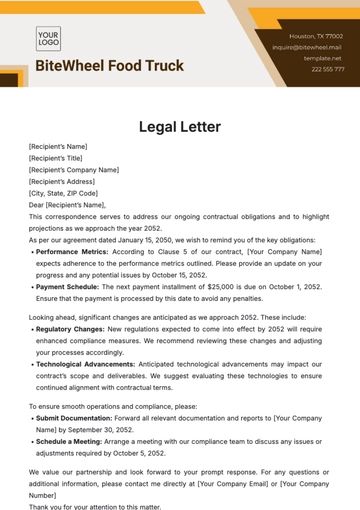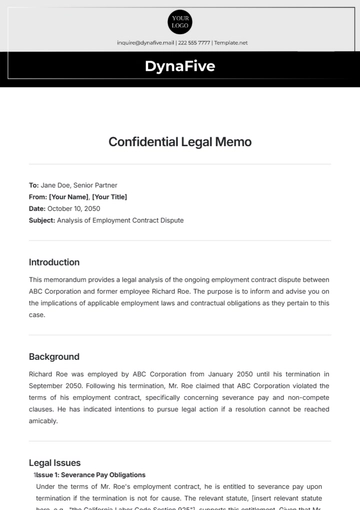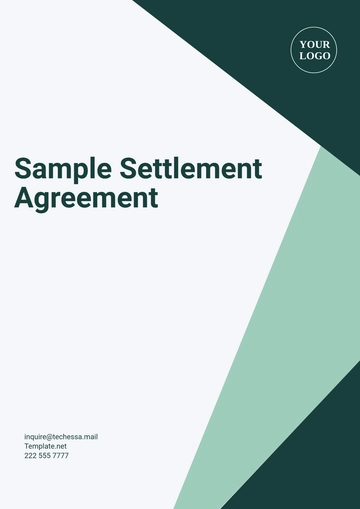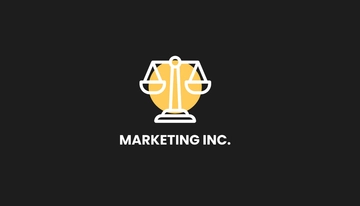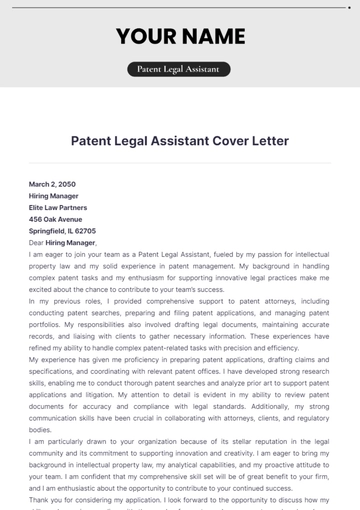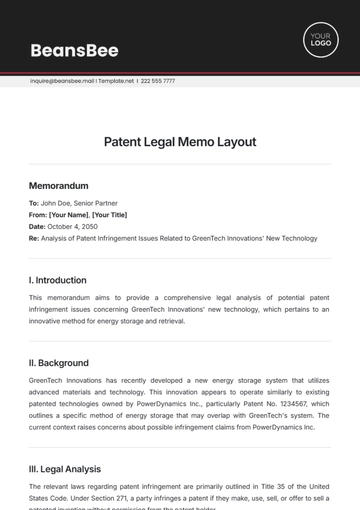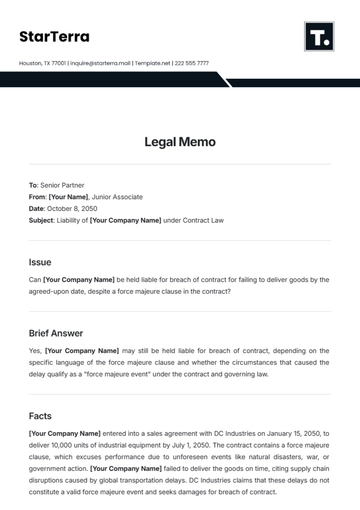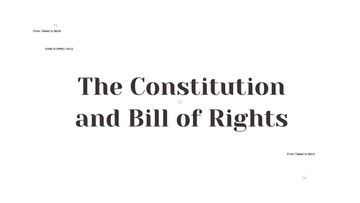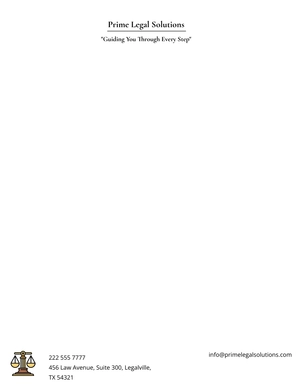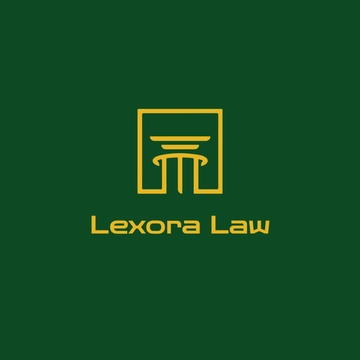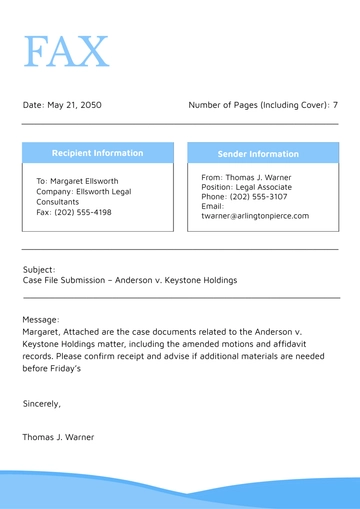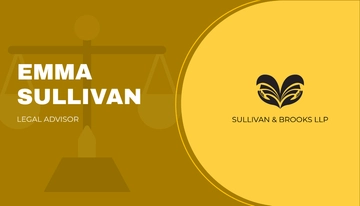Free Legal Compliance Register

I. Introduction
Overview of the Compliance Register: This document serves as a comprehensive reference for ensuring compliance with relevant laws and regulations in the healthcare sector.
Purpose and Scope: The register outlines the legal obligations that the organization must fulfill to operate within the bounds of the law.
Legal Framework Overview: Provides a brief overview of the key regulatory bodies and laws governing healthcare operations.
II. Regulatory Requirements
1. Identification of Relevant Laws, Regulations, and Standards:
Includes regulations such as HIPAA, HITECH Act, and FDA guidelines.
2. Description of Applicable Regulatory Bodies:
Details the roles and responsibilities of agencies like the FDA, CDC, and CMS.
3. Periodic Review Process for Updates:
Establishes procedures for regularly reviewing and updating compliance requirements.
III. Compliance Responsibilities
1. Designation of Compliance Officers/Team:
Appoints individuals responsible for overseeing compliance efforts within the organization.
2. Allocation of Compliance Tasks and Responsibilities:
Assigns specific compliance tasks to relevant departments or personnel.
3. Training Requirements for Staff:
Ensures that employees receive training on relevant compliance issues, including privacy laws and patient rights.
IV. Compliance Monitoring and Reporting
1. Establishment of Monitoring Procedures:
Implements processes for ongoing monitoring of compliance activities.
Implementation of automated monitoring systems to track transactions and activities for any irregularities or deviations from compliance standards.
2. Reporting Mechanisms for Non-Compliance:
Establishes channels for reporting violations or concerns regarding compliance.
Establishment of a designated compliance officer or team responsible for receiving and investigating reports of non-compliance.
3. Record-Keeping Protocols:
Outlines procedures for maintaining records of compliance activities and audits.
Utilization of electronic document management systems to securely store and organize compliance records, ensuring easy retrieval and accessibility for audits or regulatory inquiries.
V. Risk Management
1. Risk Assessment Procedures:
Conducts regular assessments to identify and mitigate potential compliance risks.
Engaging third-party risk assessment services to provide independent evaluations of compliance risks and recommendations for mitigation.
2. Mitigation Strategies for Identified Risks:
Develops strategies to address and minimize risks related to regulatory non-compliance.
Enhancing data security measures, such as encryption and access controls, to mitigate the risk of non-compliance with data protection regulations.
3. Contingency Plans for Unforeseen Events:
Establishes plans to manage compliance issues that may arise unexpectedly, such as data breaches or natural disasters.
Collaborating with industry peers to share best practices and resources for managing compliance risks during unforeseen events like supply chain disruptions.
VI. Data Protection and Privacy
1. Compliance with Data Protection Laws:
Ensures compliance with laws such as HIPAA and GDPR to protect patient information.
Conducting periodic audits or assessments to verify compliance with specific requirements of data protection laws, such as data minimization, purpose limitation, and data subject rights.
2. Data Handling and Storage Protocols:
Establishes protocols for the secure handling, storage, and transmission of sensitive data.
Implementation of encryption techniques to protect sensitive data both at rest and in transit, in accordance with industry standards.
3. Consent Mechanisms and Privacy Policies:
Implements mechanisms for obtaining patient consent and maintains updated privacy policies.
Integration of consent management platforms or tools to streamline the process of obtaining and managing patient consent for data processing activities.
Regular communication and training for employees on privacy policies and procedures to ensure understanding and compliance with legal requirements and organizational guidelines.
VII. Corporate Governance
1. Compliance with Corporate Governance Principles:
Implementation of ongoing training programs for board members, executives, and employees to ensure awareness and understanding of corporate governance principles, responsibilities, and expectations.
Integration of corporate governance topics into new employee orientation programs to instill a culture of compliance and ethical behavior from the outset of employment.
2. Board Oversight and Accountability:
Establishes oversight mechanisms to hold the board accountable for compliance efforts.
Conducting annual or periodic meetings with stakeholders to provide updates on corporate governance initiatives, performance, and areas for improvement, fostering trust and transparency in corporate decision-making processes.
3. Disclosure Requirements:
Ensures transparency by complying with disclosure requirements for stakeholders and regulatory bodies.
Implement processes and controls to verify the accuracy, completeness, and timeliness of disclosures, including the involvement of internal audit teams or external auditors for independent validation.
VIII. Ethics and Integrity
1. Code of Conduct Implementation:
Development and delivery of regular training programs and workshops to educate employees and stakeholders about the company's code of conduct, ethical standards, and values.
Integration of ethical decision-making frameworks and case studies into training materials to help employees recognize and navigate ethical dilemmas in their daily work.
2. Whistleblower Protection Measures:
Implementation of leadership development programs that emphasize ethical leadership principles and practices, fostering a culture of integrity from the top down.
Mentorship and coaching initiatives for senior executives and managers to promote ethical decision-making, accountability, and transparency in their leadership roles.
3. Conflict of Interest Policies:
Conducting periodic ethical risk assessments to identify potential areas of vulnerability or exposure to ethical lapses, such as conflicts of interest, bribery, or fraud.
Collaboration with internal audit teams or external consultants to conduct independent reviews and evaluations of the effectiveness of ethics and integrity initiatives, identifying gaps and recommending improvements.
IX. Environmental Health and Safety
1. Compliance with Environmental Regulations:
Conducting regular assessments of the company's operations to evaluate their environmental impact, including factors such as energy consumption, carbon emissions, and resource usage.
Implementation of initiatives to reduce environmental footprint, such as energy-efficient technologies, waste reduction programs, and sustainable sourcing practices.
2. Workplace Safety Protocols:
Implements safety protocols to protect employees and patients from workplace hazards.
3. Emergency Response Procedures:
Develops procedures to respond effectively to emergencies such as natural disasters or medical crises.
X. Contractual Obligations
1. Review of Contracts for Compliance:
Reviews contracts with vendors, suppliers, and partners to ensure compliance with legal and regulatory requirements.
2. Contract Management Processes:
Implements processes for managing contracts throughout their lifecycle, including renewal and termination.
3. Dispute Resolution Mechanisms:
Establishes mechanisms for resolving contractual disputes in a timely and efficient manner.
XI. Supplier and Vendor Compliance
1. Due Diligence Procedures for Suppliers/Vendors:
Conducts due diligence on suppliers and vendors to ensure compliance with legal and regulatory requirements.
Verifies the authenticity of certifications and licenses held by suppliers and vendors to confirm compliance with industry-specific regulations and standards.
2. Compliance Requirements for Contracts:
Includes compliance requirements in contracts with suppliers and vendors to mitigate risks.
Ensures alignment between contractual compliance requirements and the organization's overall risk management and corporate governance objectives.
3. Monitoring and Auditing of Supplier/Vendor Activities:
Monitors and audits supplier and vendor activities to ensure ongoing compliance with contractual obligations.
Collaborates with suppliers and vendors to implement corrective actions and preventive measures identified through monitoring and auditing processes, fostering a culture of continuous improvement and accountability.
XII. Training and Awareness
1. Employee Training Programs:
Provides ongoing training programs to educate employees about compliance requirements and best practices.
2. Communication Channels for Compliance Updates:
Establishes communication channels to disseminate updates and changes to compliance regulations and policies.
3. Periodic Awareness Campaigns:
Conducts periodic awareness campaigns to reinforce compliance principles and promote a culture of compliance within the organization.
XIII. Recordkeeping and Documentation
1. Document Management Systems:
Implements systems for storing and managing compliance-related documents and records.
2. Retention Policies for Compliance Records:
Establishes policies for retaining compliance records in accordance with legal and regulatory requirements.
3. Accessibility and Security Measures:
Ensures that compliance records are accessible to authorized personnel while maintaining appropriate security measures to protect sensitive information.
XIV. Signature
By signing below, you acknowledge that you have reviewed and understand the contents of this compliance checklist.

[COMPLIANCE OFFICER NAME]
[DATE]
- 100% Customizable, free editor
- Access 1 Million+ Templates, photo’s & graphics
- Download or share as a template
- Click and replace photos, graphics, text, backgrounds
- Resize, crop, AI write & more
- Access advanced editor
Discover unparalleled convenience with the Legal Compliance Register Template from Template.net. This meticulously crafted tool empowers you to maintain regulatory adherence effortlessly. Fully editable and customizable, it ensures seamless integration into your workflow. Harness the power of our AI Editor to tailor it to your exact needs. Stay compliant with ease, courtesy of Template.net.
